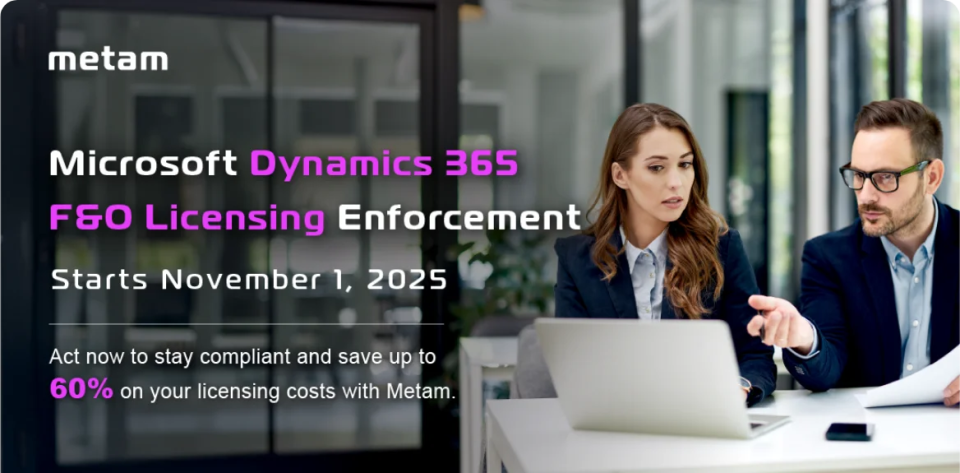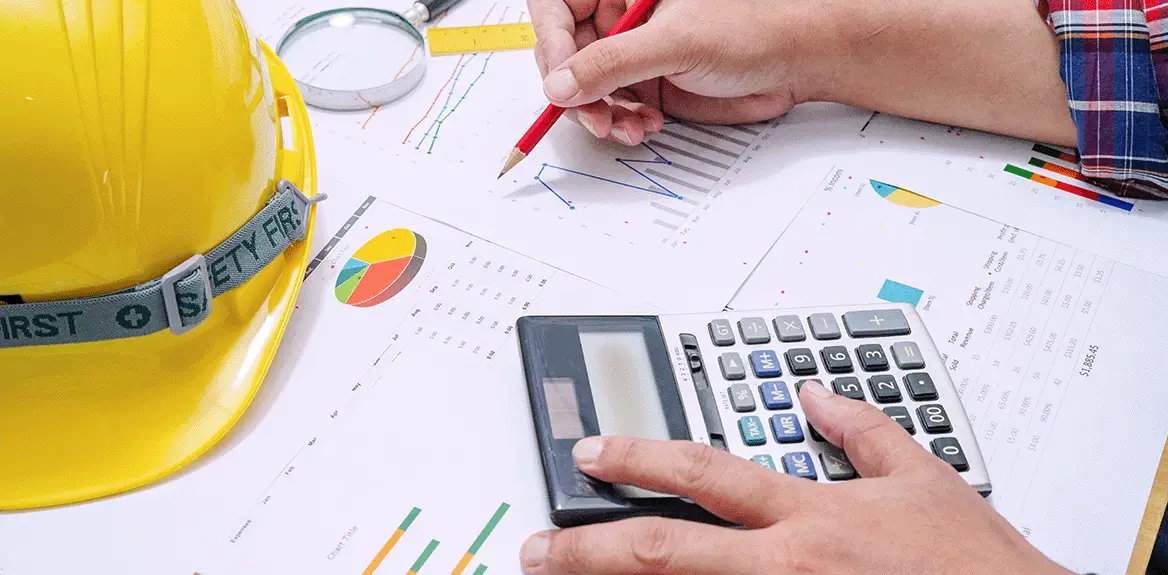Sustainability in mega AEC projects: Leading at scale without losing integrity
By Metam

Abstract
Leadership that integrates integrity and sustainability is essential for mega construction, engineering and architecture projects to succeed at scale. This article examines frameworks, ethical governance, technology applications, and practical strategies supported by Metam Technologies to advance sustainable infrastructure with community trust and accountability.

Ensuring sustainability in mega construction, engineering and architecture projects demands leadership that balances innovation with unwavering integrity. As these vast undertakings grow in complexity and scale, maintaining environmental, social, and ethical standards becomes critical to avoid reputational risks and ensure long-term success. The challenges are many: coordinating across diverse stakeholders, addressing community impacts, and embedding accountability in governance frameworks. Addressing these requires a strategic, thoughtful approach that integrates sustainability as a core leadership principle rather than a compliance afterthought.
Sustainability efforts often struggle under the weight of AEC mega project scale. Leaders must navigate opposition from affected communities, ethical dilemmas surrounding displacement or gentrification, and complex environmental regulations. The goal is to embed sustainability frameworks that promote regeneration, justice, and accountability while driving project delivery on time and within budget. Drawing from recent data, mega projects with strong community engagement report substantially fewer social conflicts and accelerated delivery schedules, underscoring the value of integrity-led leadership.
This article explores leadership frameworks for scaling sustainability with integrity, technology-enabled planning that incorporates ethics and justice, governance playbooks for effective delivery, and how Metam Technologies supports these ambitions through expert consulting and strategy.
What defines integrity-led sustainability in mega AEC projects?
Integrity-led sustainability in mega construction, engineering, and architecture (AEC) projects goes beyond meeting conventional environmental targets. It requires a holistic perspective that considers ecosystems, impacted communities, and equitable treatment of all stakeholders. This approach emphasizes long-term resource stewardship while keeping social equity and economic viability at the core.
Beyond carbon
Integrity-led sustainability transcends simple carbon reduction goals. It incorporates the health of entire ecological systems, social dynamics, and equity considerations. Stewardship must be whole-system oriented, recognizing the interconnectedness of environmental and social factors that influence project outcomes.
Ethical leadership and community trust
True ethical leadership fosters trust by engaging transparently with communities and avoiding superficial solutions that merely greenwash projects. Reliance on quick technological fixes without addressing underlying social and environmental issues risks alienating stakeholders and damaging reputations.
Regenerative vs. sustainable outcomes
Emerging regenerative strategies emphasize restoring ecosystems and revitalizing social capital, going beyond traditional sustainability that focuses on minimizing harm. This paradigm shift encourages projects to leave positive legacies by actively repairing and enhancing natural and human environments.
Claims governance and transparency
Robust governance mechanisms that verify sustainability claims through transparent processes act as safeguards. These systems prevent exaggeration or misinformation, ensuring accountability and reinforcing integrity at all organizational levels.
Together, these elements define a framework where sustainability is inseparable from integrity, enabling mega projects to achieve lasting environmental and social benefits.
How can AEC leaders embed integrity into mega-project sustainability?
Embedding integrity into sustainability within construction, engineering, and architecture begins with leadership grounded in clear values and ethical principles. Robust governance structures and the responsible use of technology strengthen this foundation, while innovative financial models provide the right incentives for sustainable performance.
Values-driven leadership model: charter, code of conduct
Establishing explicit charters or codes of conduct grounded in sustainability and ethics guides leadership behavior and decision-making. These models align all stakeholders toward common principles and reinforce accountability for sustainable outcomes. They also provide clarity and consistency that help navigate difficult decisions and competing priorities.
Multi-stakeholder governance: forums, local partnerships
Governance that incorporates diverse stakeholder voices fosters collaboration and balances interests. Local partnerships and multi-stakeholder forums provide platforms for meaningful engagement and consensus building, which are crucial for managing social complexities. Inclusive governance also enhances legitimacy and supports long-term project acceptance.
Ethical tech deployment: use digital twins, modular methods responsibly
Technologies such as digital twins and modular construction offer sustainability advantages but require careful ethical consideration. Leaders must ensure these tools respect data privacy, promote transparency, and are deployed to enhance—not replace—human judgment and community involvement. Responsible technology use safeguards against unintended social or environmental harms.
Performance-linked financing
Financial instruments linked to measurable environmental, social, and governance (ESG) outcomes embed accountability into capital allocation. Performance-linked financing aligns investor interests with project sustainability targets, incentivizing genuine progress rather than symbolic compliance. This innovative funding approach fosters deeper integration of sustainability into financial and operational decision-making.
This multi-faceted approach creates a culture and system where sustainability integrity is embedded deeply within mega project leadership. It ensures that commitments are translated into measurable and verifiable outcomes that benefit all stakeholders.
Which AEC project frameworks ensure sustainability at scale?
Established frameworks provide structured methodologies to integrate sustainability with an ethical lens at scale. These are augmented by innovative design philosophies and emerging technologies that enhance construction, engineering and architecture project impact and inclusivity. Such frameworks offer proven guidance for consistent and measurable sustainability performance.
Envision, BREEAM, LEED with ethics lens
Traditional sustainability frameworks like Envision, BREEAM, and LEED have evolved to integrate ethics, social equity, and governance dimensions. Applying these standards with an ethics perspective ensures that certifications represent meaningful achievements rather than checklists. This enhances the frameworks’ credibility and relevance in addressing complex social and environmental challenges.
Regenerative design embedded workflows
Regenerative design workflows shift project focus from impact mitigation to ecosystem and community restoration. Embedding these workflows requires cross-disciplinary collaboration and process innovation to achieve net-positive effects on environment and society. Such an approach reflects growing industry recognition that sustainability must be proactive and restorative.
Integrated social equity metrics: gentrification, displacement KPIs
Incorporating social equity metrics allows for the monitoring of gentrification, displacement, and other social risks associated with mega projects. These KPIs provide measurable data to ensure that social justice is actively managed throughout project lifecycles. Integrating these indicators into decision-making processes strengthens accountability and responsiveness to community needs.
Digital twin for environmental scenario testing
Digital twins simulate environmental and social scenarios, enabling teams to anticipate risks and optimize interventions dynamically. This technology enhances adaptive management and supports decision-making with data-driven insights. Real-time scenario testing also helps reconcile sustainability goals with operational realities.
These frameworks and tools together empower mega projects to deliver sustainability at scale with integrity and inclusiveness. Their combined application represents an evolution toward more holistic, transparent, and adaptive project delivery methods.
How do AEC leaders manage sustainability risks in mega projects?
Comprehensive risk management is fundamental to sustaining integrity-led sustainability. It requires broad perspectives, timely data, continuous oversight, and effective stakeholder engagement to anticipate and mitigate emerging challenges. This proactive stance minimizes disruptions and enhances AEC project resilience.
Holistic risk registers: social, ecological, reputational
Risk registers must encompass social impacts, ecological vulnerabilities, and reputational threats alongside traditional operational risks. This inclusive approach ensures no critical factor is overlooked, promoting balanced risk awareness. Comprehensive risk documentation supports strategic prioritization and resource allocation.
Early warning systems via IoT and digital twins
Real-time monitoring technologies, including IoT sensors and digital twins, provide early warnings of deviations in environmental or social parameters. Such timely alerts facilitate proactive responses that reduce negative impacts. Early detection capabilities are essential for managing complex and dynamic project environments..
Adaptive governance loops & audits
Regular audits combined with adaptive governance loops support iterative improvements. Lessons learned feed back into project controls and planning, strengthening resilience and responsiveness over time. This cyclical process ensures governance remains relevant and aligned with evolving sustainability goals.
Stakeholder grievance and compliance mechanisms
Transparent grievance procedures enable affected parties to raise concerns safely and fairly. Effective compliance mechanisms reinforce trust and demonstrate commitment to ethical project management. These mechanisms also provide critical feedback that can inform continuous improvement.
A robust risk management framework combining these elements helps sustain sustainability ambitions under complex mega project conditions. It supports the anticipation and mitigation of multifaceted risks that could otherwise undermine project success and integrity.
How Metam Technologies supports integrity-led sustainability at mega scale?
Metam contributes expert guidance and strategic frameworks that reinforce leadership efforts to embed integrity in sustainability. Its consulting approach emphasizes governance, analytics, and stakeholder collaboration tailored to complex construction, engineering and architecture projects. This collaboration aims to bridge strategic vision with practical execution.
Integrity dashboard with KPI tracking
Metam advocates for transparency through comprehensive dashboards tracking key sustainability indicators such as carbon footprints, social equity measures, and community sentiment. These tools offer leadership timely insights and maintain strategic focus. This visibility encourages informed decision-making and accountability.
Adaptive scenario modeling via digital twin integration
Through the integration of digital twins, Metam enables scenario modeling that anticipates environmental and social outcomes. This supports leaders in making informed decisions that uphold sustainability commitments throughout project phases. Scenario planning helps balance competing priorities and optimize interventions.
Stakeholder engagement workspace and tools
Metam’s strategy includes facilitating stakeholder engagement with tools that capture real-time feedback and document grievances. This process helps maintain open dialogue and fosters trust between project teams and affected communities. Ongoing engagement supports social license to operate and mitigates conflicts.
Ethics-linked alerts & compliance workflows
Embedding ethics into operational workflows, Metam supports alert systems that flag potential compliance issues and ensure adherence to sustainability policies. This systematic approach reinforces governance and mitigates risks. Proactive compliance management protects reputation and sustains stakeholder confidence.
Integrated reporting and verification support
Metam assists organizations in aligning project documentation and reporting with recognized sustainability standards, simplifying verification and enhancing credibility with regulators and investors. This support streamlines audits and fosters consistent sustainability performance communication.
This comprehensive approach from Metam enables the successful delivery of sustainable construction, engineering, and architecture mega projects with integrity and accountability. The collaborative effort fosters measurable progress and continuous learning.
Key Takeaways
Sustainability leadership at construction, engineering and architecture mega project scale demands a commitment to integrity that goes beyond impact metrics.
Metam Technologies partners with AEC organizations to embed integrity deeply into sustainability efforts. Combining expert consulting, advanced analytics, ethical frameworks, and stakeholder engagement tools, Metam enables complex infrastructure projects to achieve measurable environmental and social outcomes while maintaining transparency, trust, and accountability at scale.
Success arises from harmonizing innovative technology, robust ethical governance, and genuine community engagement. Emerging regenerative design principles and social equity metrics highlight the evolving nature of sustainability beyond compliance.
Holistic risk management systems equipped with early warning tools and grievance procedures safeguard project integrity and foster stakeholder trust. Frameworks such as Envision, BREEAM, and LEED, applied with ethical rigor, offer proven paths to scale sustainable outcomes.
Metam Technologies, through its expert consulting and strategic support, enables leaders to embed integrity deeply within governance, analytics, and stakeholder collaboration. This fosters resilient, transparent, and accountable mega projects that deliver long-term environmental and social benefits.
Ultimately, integrity-led sustainability in mega projects is a dynamic journey requiring concerted effort across leadership, governance, technology, and finance. With its strategic and systems-based support, Metam helps ensure this alignment across all dimensions.
By embracing this holistic approach, mega projects can not only meet but exceed sustainability expectations—delivering regenerative outcomes that benefit communities, ecosystems, and future generations.


